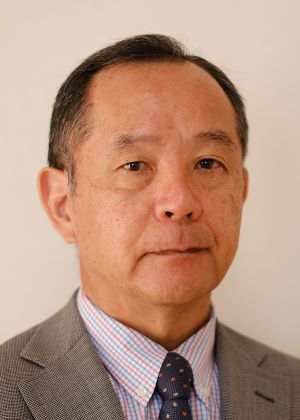Masaaki Ohtsuka, Chair of Global Diagnostic Imaging, Healthcare IT & Radiation Therapy Trade Association
I started as a software engineer by developing embedded software for digital X-ray systems in the early 1980s. It was a transitional period where a system that combined 8-bit microprocessors such as i8085 or Z80 with assembly language to a system based on C language and 16-bit processors such as i8086 or MC 68000. It was a transition from the technology-centered era to the engineering era. But engineering in hardware and engineering in software are significantly different.

In the world of hardware, people have utilized well-established development standards, templates, and libraries. In addition, quality has been guaranteed by clear reviews in the development process.
In contrast, developers seem to search for a place between engineering and authoring in the software world. Authoring is like a novelist’s work for a story. Just like 100 novelists can write 100 different novels based on the same topic, 100 software engineers can create 100 different kinds of software codes for one required specification.
This method may be apt for software for computer games. For example, a genius engineer might appear and create an outstanding game that no one could think of.
However, software for medical devices has a different story. A software code controls the medical device’s operation and generates information and images displayed on the monitor. This affects the examination and diagnosis and the patient's health directly. Thus, engineers should install high-quality software accurately because of such a significant role.
Then, what can we do? Computer tools fix the grammar, but there is no way to tie the programming of the 100 software engineers uniformly. It can be frustrating but pursuing “process engineering” is the best option here. To do so, a medical device software should follow the process based on the software lifecycle stipulated in IEC62304. The development and maintenance of global software standards are particularly important.
Software development has made remarkable progress. People use not only Waterfall but Agile in development methodologies. In addition, as deep learning AI has been commercialized, the software development environment went through a sea change. It is not an exaggeration to call this “a paradigm shift.” Software standardization is becoming ever more important with such large and numerous changes.
So far, I have explained software’s characteristics in engineering. Next, let’s talk about the relationship between medical device software and the real world.
As I mentioned earlier, software engineering started from 8-bit and 16-bit microprocessors and advanced to the commercialization of 32-bit and 64-bit processors and innovations such as architecture and software development. The advancement of engineering, including networking, is a history of the medical community and the overall industry. People have applied those achievements to medical devices in the medical device sector. Applications contain medically professional knowledge and experience, but their software or IT platforms are identical to or part of those used in the real world.
Recently, the importance of cyber security has grown. From this perspective, medical devices or medical information systems are not special. They are a component of the real world. Some say healthcare professionals use medical devices, so they should be treated exceptionally. Others say people do not have to worry about security because medical networks have blocked internet access.
However, those arguments have no standing in this era because the entire world is connected on a network through the concept of the Internet of Things.
Rather, medical information is highly vulnerable to cyber-attack because it contains confidentiality and handles high-valued information. In reality, some people without sufficient knowledge or experience maintain health information systems to enhance cyber security.
As part of the medical device industry, we are responsible for preparing guidelines for cyber security in cooperation with administrative and related institutions, accumulating knowledge, and sharing it with the entire medical community. In this regard, DITAA plans to closely work with each nation’s medical device industry group, including Korea Medical Devices Industry Association (KMDIA), to push for these tasks.
In this column that celebrates Korea’s 15th Medical Device Day, I wrote on the standardization of medical device software and the importance of guideline maintenance. I hope this could help KMDIA’s activities for medical device software.
Profile of DITTA Chair Masaaki Ohtsuka:
After starting a career as a software engineer for digital X-ray systems, Ohtsuka accumulated experience in project management and planning. From 2010 to 2014, he was the head of Global PACS development in the U.S. Since October 2020, he has served as the Secretary-General of the Japan Medical Imaging and Radiological Systems Industries Association (JIRA).

